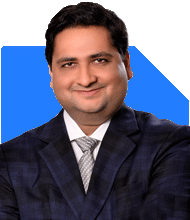Hardik Parikh | Answer |Ask -Follow
Tax, Mutual Fund Expert - Answered on Jul 29, 2023
He also holds an MBA degree from IIM-Indore.
Hardik, who began his career as an equity research analyst, founded his own advisory firm, Hardik Parikh Associates LLP, which provides a variety of financial services to clients.
He is committed to sharing his knowledge and helping others learn more about finance. He also speaks about valuation at different forums, such as study groups of the Western India Regional Council of Chartered Accountants.... more

क्या मैं संशोधित रिटर्न पर टीडीएस रिफंड का दावा कर सकता हूं?
1961 का आयकर अधिनियम, धारा 139 (5), करदाताओं को संशोधित आयकर रिटर्न दाखिल करने की अनुमति देता है यदि उन्होंने पहले दाखिल रिटर्न में त्रुटियां की हैं। यदि देय वास्तविक कर टीडीएस के बराबर नहीं है, तो आपको टीडीएस रिफंड का दावा करने के लिए अपनी आय और करों की गणना करने और आयकर रिटर्न (आईटीआर) दाखिल करने की आवश्यकता है।
हालाँकि, कृपया ध्यान दें कि आप रिटर्न को केवल तभी संशोधित कर सकते हैं यदि मूल रिटर्न समय पर दाखिल किया गया हो। विलम्बित रिटर्न को संशोधित नहीं किया जा सकता।
एक बार जब आपका संशोधित रिटर्न संसाधित हो जाता है, तो यदि आपके द्वारा कोई अतिरिक्त कर भुगतान किया गया है, तो इसे रिफंड के रूप में दावा किया जा सकता है। ईसीएस ट्रांसफर के माध्यम से रिफंड आपके बैंक खाते में जमा किया जाएगा।
हम उम्मीद करते है कि यह आपके सवाल का जवाब दे देगा।
आप नीचे ऐसेही प्रश्न और उत्तर देखना पसंद कर सकते हैं
Mihir Tanna |1089 Answers |Ask -Follow
Tax Expert - Answered on Mar 17, 2023
Mihir Tanna |1089 Answers |Ask -Follow
Tax Expert - Answered on Sep 08, 2023
T S Khurana |536 Answers |Ask -Follow
Tax Expert - Answered on Jul 29, 2024
Dr Dipankar Dutta |1836 Answers |Ask -Follow
Tech Careers and Skill Development Expert - Answered on Dec 05, 2025
Ulhas Joshi |280 Answers |Ask -Follow
Mutual Fund Expert - Answered on Dec 05, 2025
Dr Dipankar Dutta |1836 Answers |Ask -Follow
Tech Careers and Skill Development Expert - Answered on Dec 04, 2025
Ravi Mittal |676 Answers |Ask -Follow
Dating, Relationships Expert - Answered on Dec 04, 2025
Anu Krishna |1745 Answers |Ask -Follow
Relationships Expert, Mind Coach - Answered on Dec 04, 2025
Anu Krishna |1745 Answers |Ask -Follow
Relationships Expert, Mind Coach - Answered on Dec 04, 2025
Mayank Chandel |2562 Answers |Ask -Follow
IIT-JEE, NEET-UG, SAT, CLAT, CA, CS Exam Expert - Answered on Dec 04, 2025
Mayank Chandel |2562 Answers |Ask -Follow
IIT-JEE, NEET-UG, SAT, CLAT, CA, CS Exam Expert - Answered on Dec 04, 2025
Mayank Chandel |2562 Answers |Ask -Follow
IIT-JEE, NEET-UG, SAT, CLAT, CA, CS Exam Expert - Answered on Dec 04, 2025
Mayank Chandel |2562 Answers |Ask -Follow
IIT-JEE, NEET-UG, SAT, CLAT, CA, CS Exam Expert - Answered on Dec 04, 2025


























